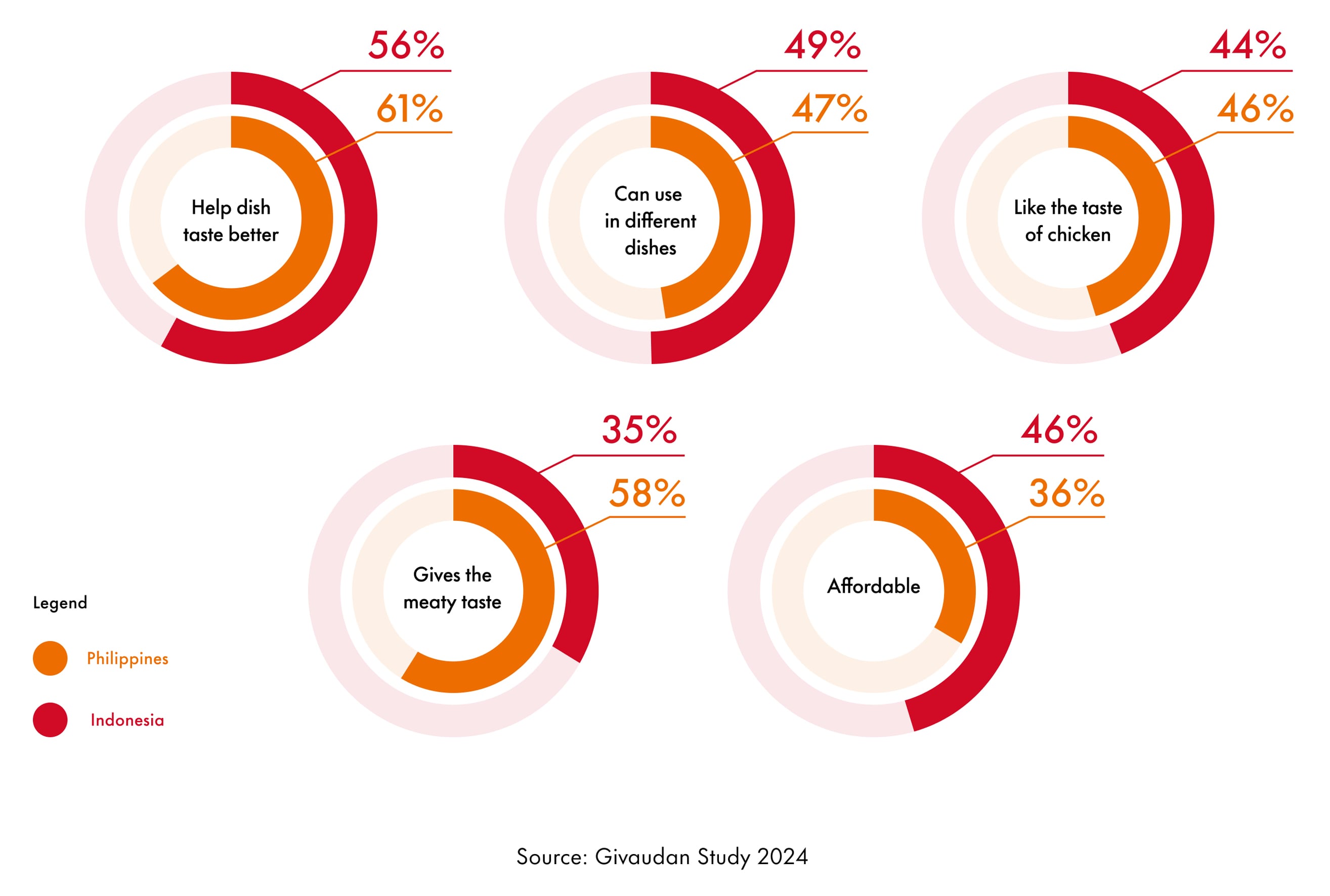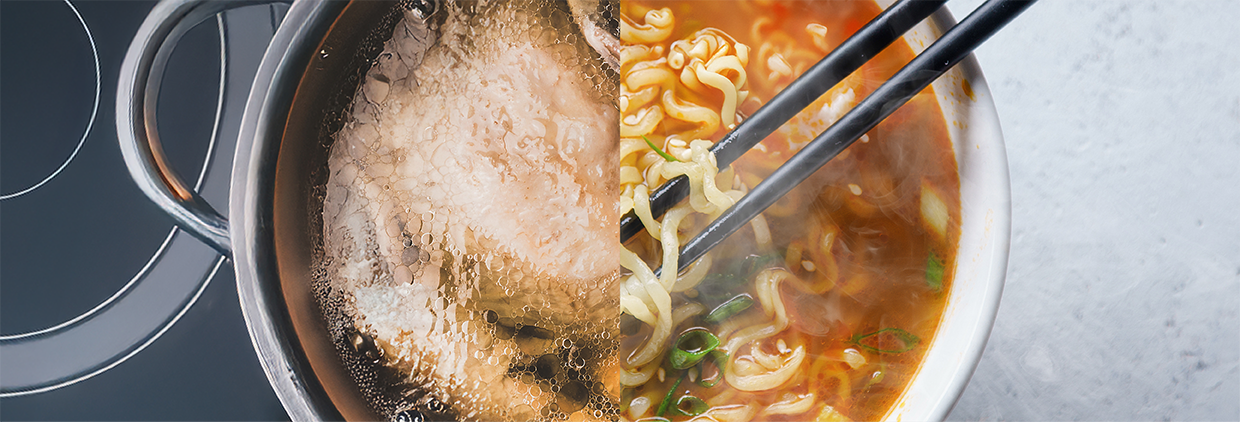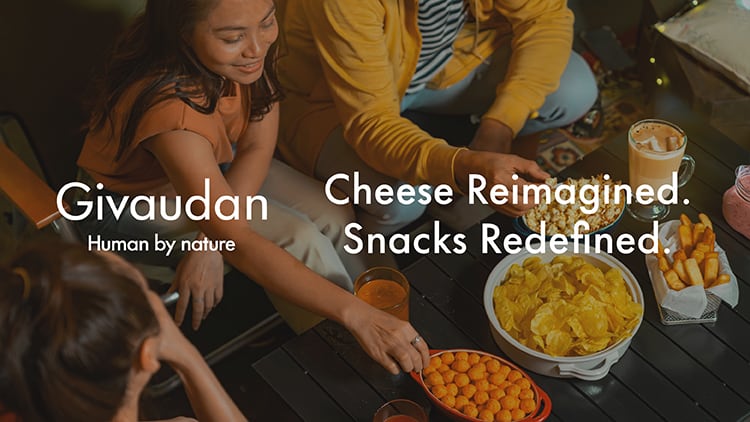Consumers in the Asia-Pacific region are looking for more impactful chicken flavours in convenience categories.
They’re craving the familiarity of home – with more elevated, intense tastes that reflect evolving palates.
In the Philippines, the biggest chicken flavour purchase drivers are familiar/real chicken taste and balanced, superior flavour.¹ In Indonesia, real ingredients such as chicken broth and spices carry equal weight, alongside balanced and improved flavour.²
The global poultry market, meanwhile, is expected to grow 2.5-3% in 2025.³ Demand for more affordable proteins, lower input costs and sustainability concerns are all driving a market shift towards chicken solutions. The challenge now is creating chicken experiences that live up to rising consumer expectations.

Why chicken flavour often underdelivers in production
In convenience foods, commercial production pushes chicken flavour systems to their limits. High-temperature processes like frying, retorting and extrusion often cause delicate flavour compounds to break down or volatilise, resulting in muted, flat profiles. Variations in pH, water activity and fat content can also alter how flavours bind or release during cooking – and create inconsistencies between lab prototypes and large-scale runs.
For R&D teams, that means reformulation cycles and technical compromises. For procurement, loss of stability equates to waste, cost inefficiency and potential supply risk. And for marketers, flat or inconsistent taste experiences hand opportunities to competitors.
So how can convenience producers create bolder, richer chicken taste experiences while honouring deep-rooted culinary traditions?
Next-gen innovation with culinary heritage
Translating familiar chicken experiences into a stable, scalable product requires advanced innovation. Now, next-generation technologies are giving producers new opportunities to create chicken that tastes like home – yet elevated, intense and complex.
The pathway to chicken flavour innovation can be explored through three perspectives:
1. Consumer and market insights
Successful innovation always begins with a deep understanding of diverse consumer preferences. By exploring culinary trends, changing consumer preferences and evolving purchase drivers (like consumers’ environment, health and ethics), producers can ensure relevance and acceptance in emerging markets.
“In the Asia-Pacific region, consumers’ palates are evolving; they’re bolder and more curious, but they still want chicken’s familiar warmth,” says Laveena Vaz, Senior Product Manager Culinary & Plant Protein at Givaudan.
“Our analysis of packaging claims on high-growth chicken products shows that key marketing claims include cooking methods, flavour descriptors and flavour combinations.”
2. Sensory and analytical science
Aroma and taste perception need to align with consumer expectations of real chicken. “Sensory science captures the experiences and translates them into an objective, detailed profile of attributes. These attributes are then organised into distinct sensory elements, guiding our understanding of consumer preferences and the product landscape,” says Wen Zhang, Senior CSI Manager Culinary & Plant Protein at Givaudan.
Cutting-edge analytical science also gives R&D teams the tools to understand the volatile organic compounds, unique amino and organic acids, minerals and salts that define chicken’s true aroma and taste.
With a deeper scientific understanding of heritage flavours, producers can then craft innovative, expert-designed solutions that deliver both superior taste and high intensity.
“Creating memorable sensory experiences requires us to decode nature,” says Vaz. “So we analyse the volatile and non-volatile components of real chicken to understand exactly what creates its flavour, aroma and mouthfeel with Givaudan’s Chicken Toolkit.
“It categorises the overall experience into distinct sensory elements,” she adds. “The toolkit is rooted in deep insights – analytical, sensory, consumer and advanced flavour technology – providing a framework to map distinct flavour profiles across different chicken cuts and parts and cooking methods for greater customisation.”

As well as meeting expectations on taste and intensity, heritage chicken flavours must also remind consumers of the food experiences they already know and love.
By meticulously analysing and selecting top notes, flavour precursors, reaction flavours, and umami ingredients – as well as masking any off-notes from plant protein or other components – producers can create more true-to-life taste profiles.
A large majority of Asia-Pacific consumers – 79% – are open to trying new flavours, too.⁴ Of these, 33% are leaders or early adopters; the others are at least willing to experiment.⁴ For these consumers, the key to creating an unforgettable chicken experience is customisation. With Givaudan’s next-generation digital tools, it’s now possible to get there faster.
“With digital co‑creation and AI‑powered tools, we’re able to transform consumer and sensory insight into actionable flavour concepts at speed, leveraging Smell-to-Taste algorithms,” says Zhang.“ Givaudan’s Virtual Aroma Synthesizer (VAS®), Myromi™ device and mobile Aroma Kiosk all operate on the principle of real‑time aroma creation and instant feedback – whether in collaborative workshops with partners or dynamic public spaces to connect with consumers.
“Complementing these tools, our Advanced Tools for Modelling (ATOM) leverages state‑of‑the‑art AI to optimise formulations and strengthen collaboration with customers,” adds Zhang.
“Together, they allow for rapid prototyping while preserving the craftsmanship and sensory excellence at the heart of every creation. We can then precisely tailor new flavour profiles, like roast chicken of Oceania or long boiled of Asia, to match the unique taste preferences of specific markets or demographics.”
3. Ingredient development, flavour creation and delivery
At the production stage, producers need a multi-layered approach to flavour delivery, essential to create consumer-preferred taste experiences:
- Heat-stable performance Reaction-based technologies and delivery systems not only withstand demanding pH and heat conditions, they actively generate and amplify flavour during cooking. This ensures rich, true-to-life chicken notes in every batch.
- Consistency at scale A stringent quality framework – from raw material qualification to finished-goods testing – guarantees flavour integrity across global production, helping producers to grow market share without reformulation headaches or consumer disappointment.
- Versatility across formats A single base chicken flavour can flex across SKUs, from soups and frozen meals to hybrid and plant-based products, streamlining inventory while delivering a consistent consumer experience.
- Future-ready innovation With clean-label substantiation systems and vegan technologies, plant-based, hybrid, and ‘less-meat’ products don’t compromise on taste or integrity of marketing claims.
Overcoming consumer scepticism
How, though, can producers win market share among meat-free consumers, or those concerned about artificial flavours? The solution is to recreate chicken flavour naturally.
“We know that some consumers are skeptical of ‘artificial’ flavours, especially in products positioned as better-for-you or sustainable,” says Vaz. “That’s why at Givaudan, we recreate the flavour of chicken the same way nature does – by understanding its chemistry, respecting its authenticity and delivering it naturally, so consumers can trust every bite.”
By being transparent about the science, grounding flavours in the chemistry of real food and enabling clean-label or natural-origin formulations, producers can convey familiarity and integrity – building consumer trust that their choice, including ‘less-meat’ products, is both delicious and aligned with their values.
Co-create the future of chicken flavour
The innovation journey may seem complex – but producers don’t have to go it alone. Givaudan gives partners the capability and technology to create heritage chicken tastes that stand out on the shelf, with higher intensity, heat stability and longevity.
“Our partners can confidently bring products to market that are naturally inspired and claim-compliant, and be uncompromising in quality and sensory experience – helping them meet consumer demand while staying true to our shared vision of a better tomorrow,” adds Vaz.
Find out more about how Givaudan helps convenience producers overcome chicken flavour production challenges.
References
- Givaudan Study 2024.
- Givaudan Study 2024.
- Rabobank Study, Q2 2025.
- Givaudan Study 2024.



